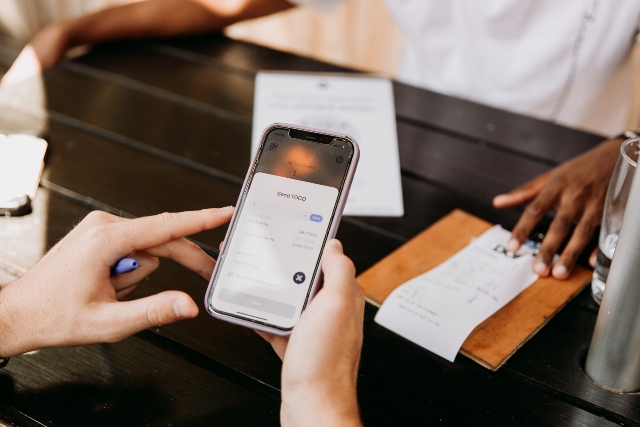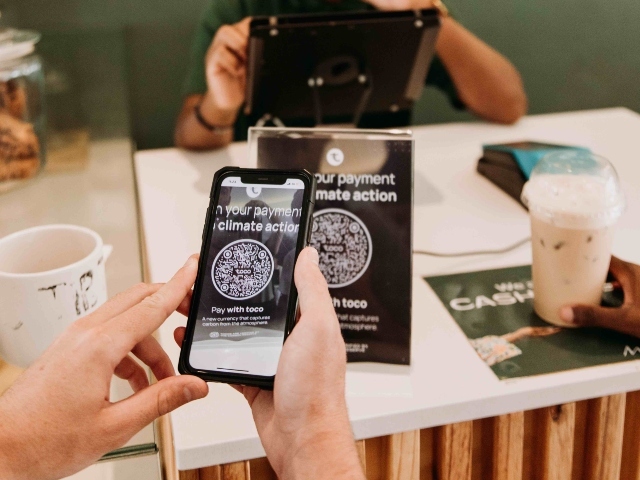
-
EXCLUSIVE: Everyone In Stellies Is Using Toco, So We Asked Their CEO Why
07 Mar 2023 by Heinrich in Vibe
[imagesource: Toco]
It’s not a cryptocurrency.
When we first heard about the new Stellenbosch-born digital currency platform, Toco, we couldn’t help but be sceptical. Perhaps it was a case of crypto-fatigue that caused our scepticism, and who could blame us? There are a reported 12 000 cryptocurrencies floating around these days, and ever since Bitcoin made billionaires out of a handful of nerds who ran their parents’ electricity bills into the stratosphere, it seems most cryptos are either get-rich-quick schemes or the digital equivalent of running a nuclear-powered bulldozer through a rainforest.
So we did what any crypto-ignorant sceptic would do, and headed to ‘their backyard’, Stellenbosch, to go see for ourselves.

Paul Rowett [imagesource: Toco]
Toco was founded by the guys behind Vumatel, Niel Schoeman and Johan “Joe” Pretorius, along with Paul Rowett who founded Lobster Ink. Rowett has taken on the role of CEO for Toco, so he seemed like the best person to speak to.
After spending a few minutes with Rowett, it becomes clear that the driving force behind Toco is not about getting rich quickly, or creating another shadowy currency whereby you can buy military-grade socks on the black market. Toco’s existence is based on a single idea: How can we make nature an asset, and in the process create a consumer mindset that gives back to nature rather than take away from it?
Toco is short for “tonne of OCO”, OCO being the molecular formula for carbon dioxide, and whenever you spend a Toco, you literally are removing a tonne of carbon from the atmosphere. If that sounds incredibly simple, it’s because it is. Think of it as the Green Standard.
In the case of the Toco payment platform, each unit of toco in circulation is represented by such a carbon mitigation asset, held and owned centrally by an entity called The Carbon Reserve, an independent non-profit foundation set up specifically for this purpose and is regulated in Switzerland.
Carbon capturing is done through various initiatives such as direct carbon capture, reforestation, and soil sequestration. All of these initiatives are verified independently and once validated, tradeable certificates (carbon credits, carbon offsets, or carbon mitigation assets) are issued. It is from these assets that Toco gets its value. Every Toco in circulation represents a tonne of carbon that has been removed from the atmosphere and converted into an asset, so you spend carbon every time you use Toco for a transaction.
The aim of the currency is simply to encourage carbon capturing by making these ‘assets’ available to anyone, anywhere. In fact, while in Stellenbosch, we popped into one of the local coffee shops and bought two cappuccinos using only Tocos. The ‘money’ we spent was equivalent to 281kg of carbon. To put this into a larger perspective, the average South African has a carbon footprint of roughly 6-8 tonnes per year, regardless of whether you recycle your plastics or drive a Prius. With Tocos, you can mitigate this footprint by taking your family out for dinner.
The value in this ‘carbon spending’ is that the more Tocos you spend, the greater the motivation for ‘asset farmers’ to remove carbon from the atmosphere. Supply and demand baby, the sustainable way. And seeing how Tocos really are just a replacement for normal currency, it’s money you would have spent anyway, so you might as well do some good with it. Like saving a planet.

[imagesource: Toco]
Most industries with heavy carbon footprints know all about carbon taxes. The problem thus far has been that carbon taxes are mostly just damage control and companies like Shell are not too bothered when they have to fork out a few million to ‘pay’ for the coral reef they’re destroying. These taxes hardly ever encourage sustainability among regular people. Manufacturers like Coca-Cola are all hype about recycling, but the responsibility of ensuring a sea turtle doesn’t choke on a bottle cap is left with the consumer, not the company.
Buying a Toco, and spending it at a vendor that accepts it as payment lets you bypass all the bureaucracy and half-arsed attempts by governments to save the planet. One Toco spent is one less tonne of carbon to choke on. No COP24 or Greta required. And what happens if everyone begins to use more Tocos? Carbon capturing becomes more profitable than deforestation, and the earth gets a little healthier – one cappuccino at a time.
Toco is therefore a new form of money, where the available money supply is based on the available carbon asset supply.
We’re told from a young age to clean up after ourselves, and this is probably the most effective way of mitigating your own carbon footprint there is. It doesn’t mean you have to sell your SUV or go vegan. All it does is gives you a practical and easy way to clean up after yourself. This way our children won’t have to choke on our stupidity one day.
You can have a look at their introduction video below:
At the moment Toco is available for use by both vendors and spenders in Stellenbosch only, but we can only see the potential when this is rolled out countrywide later this year. Imagine a tollgate accepting Tocos equivalent to the amount of carbon you expel on that stretch of highway. One trip to Worcester can clean up your car’s emissions for a month. Toco allows us to literally buy our way out of a climate catastrophe, by adding value to nature.
So, is Toco a cryptocurrency? No.
Would we buy and use it? We already have.
[sources:techcentral&toco]
Latest News
-
Powerful South African Short Film ‘The Last Ranger’ Scoops Up Awards And International Praise
[imagesource: Cindy Lee Director/Facebook] A compelling South African short film, The L...
-
Caprice Summer Has Started With Brunch (But Better) This Saturday + Other Lush Camps Bay Parties
[imagesource: Instagram/cafecaprice] Is it just me or has Summer been taking its sweet ...
-
Notre-Dame Cathedral In Paris Restored And Ready For Grand Reopening After Devastating Fire
[imagesource:wikimedia] After five years of work and millions in donations, The Notre-D...
-
Self-Destructing Number Plates: The Future Of Gauteng’s Roads Or Spy-Tech Fantasy?
[imagesource:worldlicenseplates.com] What sounds like a James Bond movie is becoming a ...
-
I Changed My Relationship With Food And You Won’t Believe What Happened Next
[imagesource:supplied] As the festive season approaches, it's time to deck the halls, g...
-






























